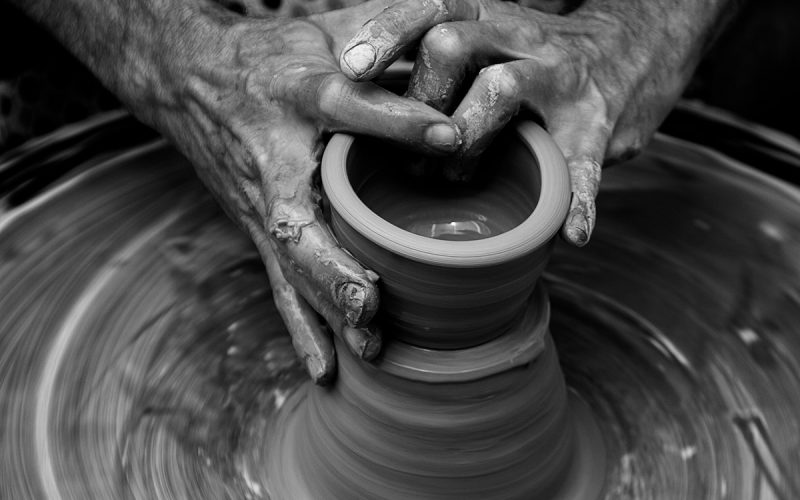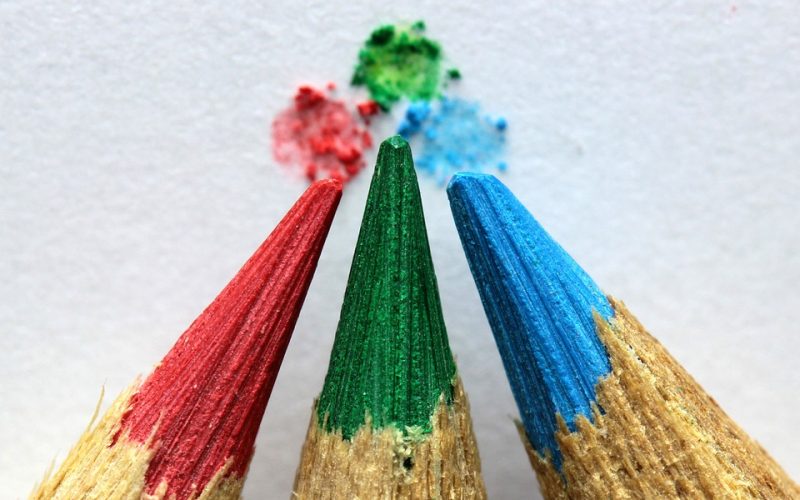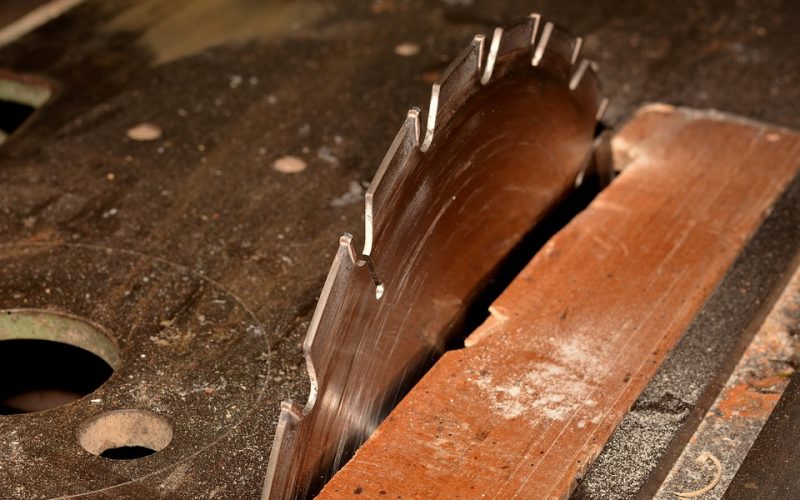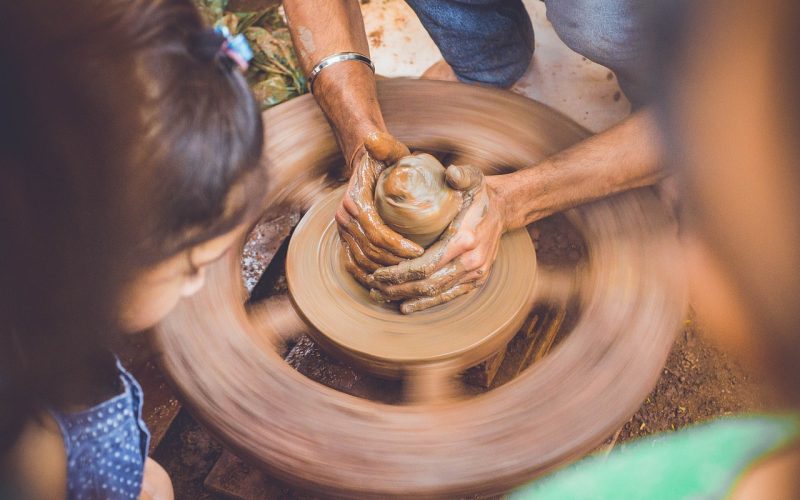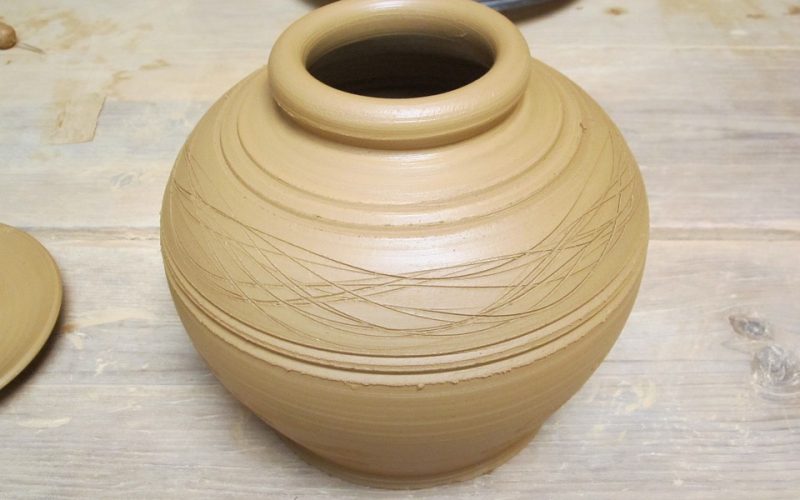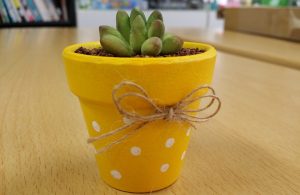Watching videos on the internet makes throwing a pot look like a 5 minute creation. An experienced potter will put a grayish lump of clay onto a wheel. Once the wheel begins spinning, the artist gets his hands wet and takes just a few minutes to complete a beautifully shaped bowl. He then cuts it off, it dries and one assumes it is decorated and fired soon after the camera stops. Unfortunately, this is not how pottery works. It takes time and effort to learn the basic skills to become an accomplished potter.
Working in pottery begins well before the clay hits the wheel. A potter must first decide what type of item is going to be created. A piece of pottery requires a different type of clay than a piece of porcelain or ceramic. Once chosen, the clay must be kneaded in order to get out the bubbles inside of it. This takes time and effort. For a novice it will probably be half an hour. For an experienced potter, the work of kneading clay only takes a few minutes. This is just the beginning of working with the clay itself.
Once the potter has the clay on the wheel, it must be centered. Clay that has not been properly centered will create problems. It will not form correctly and the potter may lose all control over the clay if it travels too far from the center. The pot will have to be thrown again. Getting a finished piece off the wheel requires a wire. The experienced potter makes it look easy, but holding the wire flat and cutting the clay off the wheel in one swipe takes practice.
Potters are used to the fact that clay will shrink when it dries. Whatever item they make on the wheel will be about twenty percent smaller when it is finished drying. Potters are also aware that an incorrectly thrown pot may break during kiln firing. They work hard to get air out of the clay for just this reason. It is important to learn all the tricks necessary to successfully throw clay pots. Taking lessons from a professional is the best way to do this.
